As we build up to the 20th anniversary of Pokémon in February 2016 and look hotly ahead towards brand new things such as the green blob Pokémon, we're going to take you back on a monthly journey through each of the generations of Pokémon, starting with the first Generation.
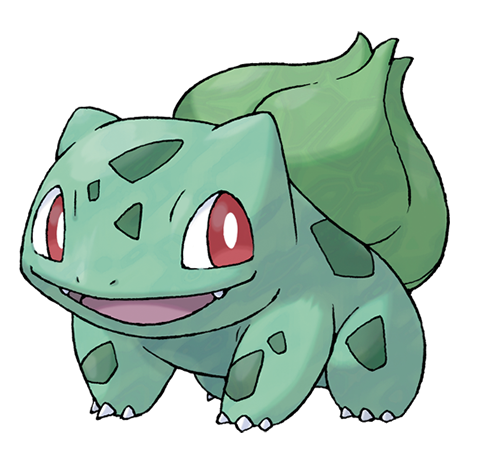
The build-up to launch
It all began when a man from Game Freak, Satoshi Tajiri, had an idea based on his hobby when he was younger, bug collecting. As he grew up he saw the idea grow based on how kids were more in towns and so wanted to create something with monsters that kids would battle, but not get injured or die. When the Game Boy was released he decided the system was perfect for it due to the link cable which would allow for players to trade. Influenced by various Japanese RPGs Game Freak began work on Pokémon, then known as Capsule Monsters, and it changed a lot as development progressed; beta images can be found online. Eventually Nintendo was pitched the idea and loved it, with Shigeru Miyamoto suggesting splitting the game into two versions with different Pokémon available in both versions. From that, Pokémon started to become what we all remember and love about the series.
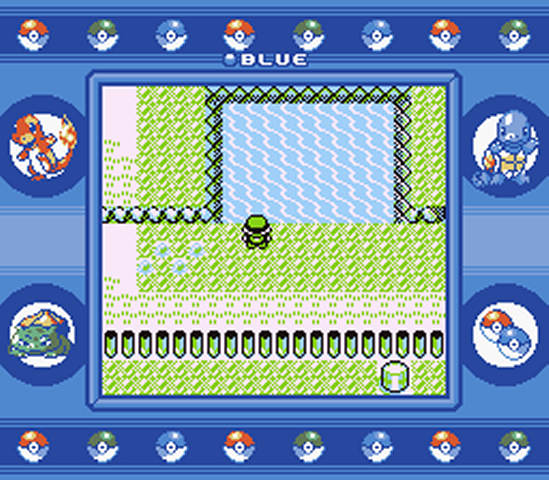
The main series
From the long period of pre-release, Pokémon Red & Green were finally released on February 27th 1996 in Japan. The games followed your journey through the Kanto region, battling the 8 Gym Leaders and facing up against Team Rocket throughout your journey. With Miyamoto's idea of two versions for trading and battling being strong marketing tools, the games flew off shelves, revitalised the Game Boy, and the massive phenomenon begun.
However, all was not that great with the games. There were a multitude of glitches and the graphics of the Pokémon weren't highly rated. From that, a third version of the game was quickly in development known as Pokémon Blue. This game featured upgraded graphics and had far less glitches than the predecessors. It was released in Japan through CoroCoro Comics in October 1996, but eventually got a retail launch three years later in Japan in 1999.
Subscribe to Nintendo Life on YouTube841k
Then came the decision to bring it to the west. During localisation there were fears that the cute Pokémon designs wouldn't go over well in the west and there were calls for the Pokémon to be redesigned to be more beefed-up, in order to placate the different likes of the western audience. The President of Nintendo at the time, the late Hiroshi Yamauchi, resisted these requests and the Pokémon remained true to the source material. That wasn't all the trouble for the localisation, however.
While working on it, it was discovered that the game couldn't simply be altered with text, but rather the games would have to be fully reprogrammed. In doing so they used the base code for the Japanese Pokémon Blue, with its updated engine and graphics, and used the encounter data from Red & Green to make what we know in the west as Pokémon Red and Pokémon Blue, which came in the US in September 1998 and Europe in October 1999 and ended up selling a global total of around 23 million units.
Following the success of the animated series, a fourth main series game was developed, this time with some focus on the brand new Game Boy Color called Pokémon Yellow, or in Japan just Pokémon Pikachu, which focused on Pikachu having the character follow you outside of its PokéBall - it matched the anime series and had sprite work based on the art style of the show.
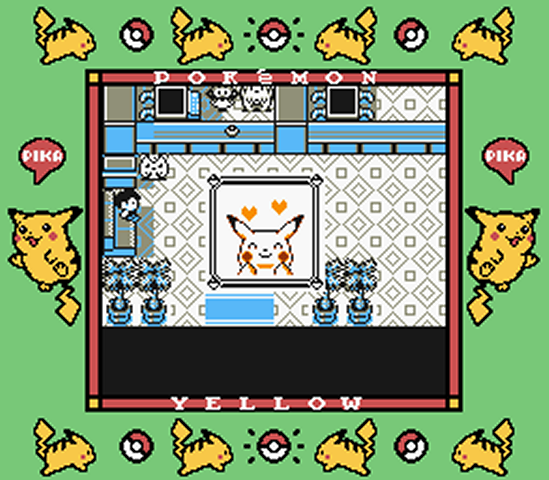
The Pokémon
So we come to the Pokémon of this Generation, and there are so many classics. Granted, that could be because these are the ones many of us grew up with, but the designs have become so iconic.
The starters were Bulbasaur, Charmander and Squirtle, which became fully evolved as Venusaur, Charizard and Blastoise, three of the most iconic Pokémon known to exist. These were your partners throughout the Kanto region.
There were also the first ever legendary Pokémon, from the majestic legendary birds of Articuno, Zapdos and Moltres to the genetically modified Psychic-type Pokémon, the most powerful Pokémon of the time, Mewtwo! It also had the first Mythical Pokémon, Mew, who was put in by Shigeki Morimoto when he shouldn't have included it, but then was revealed later as a mystery to get people talking before finally being released as an event.
But the starters and legendary Pokémon aren't all, there are many classic Pokémon like Machamp, Tauros, Gyarados and more, many of whom have become favourites to many.
For a full list of Pokémon, you can find them here: http://www.serebii.net/games/generation1.shtml
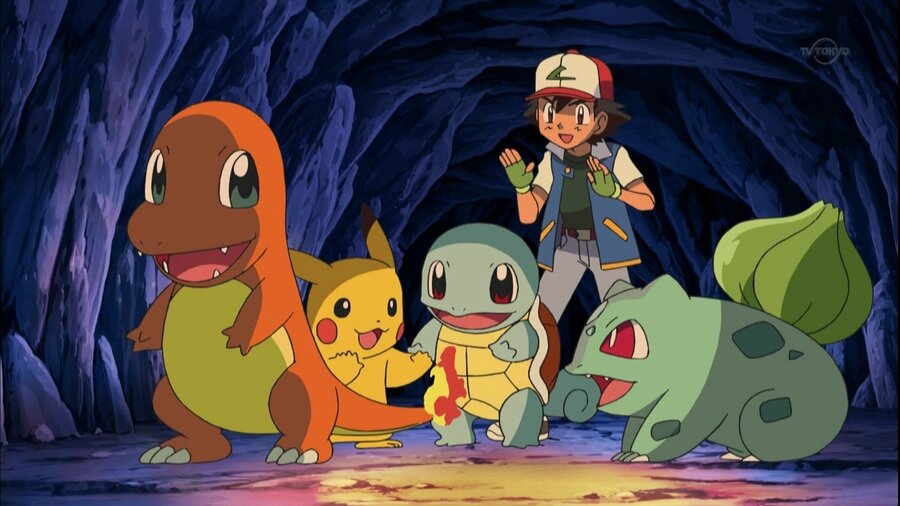
The anime
You can't think about the classic Pokémon generation, back when it was in full swing, without thinking back to the anime. Spoilers ahead on this section.
On April 1st 1997, over a year after the games were released, the Pokémon anime began in Japan, while it came to the UK and US in 1998 before the games were released. This series focused on new Pokémon Trainer Ash Ketchum and his partner Pikachu who he obtained after oversleeping and missing out on getting Bulbasaur, Charmander or Squirtle. This helped make Pikachu the overall mascot of the entire franchise.
As he travelled through the Kanto region to collect badges he destroyed Misty's bike, causing Misty to decide to travel with him, and then met the Pewter City Gym Leader, Brock, who also joined Ash on his journey. They were constantly harassed by Team Rocket who, after seeing the power of this Pikachu, wanted to try to capture it and bring it back to their boss.
Defeating all the gyms, Ash eventually made it to the league where he met a trainer called Richie but eventually lost. Following the loss, he travelled to the Orange Islands to retrieve the mysterious GS Ball and enter the Orange League while he was there, partnering with Misty and their new friend, Pokémon Watcher Tracey Sketchit.
There were two movies during this generation. The first was heavily linked into the anime and features the legendary Pokémon Mewtwo, the Mythical Pokémon Mew and their fight as Mewtwo tried to understand his existence and inevitably create a new world for him and his clones. The second movie, Pokémon 2000, introduced the legendary Pokémon Lugia and told the story of the three Legendary birds fighting in the Orange Islands causing massive storms that could destroy the world. These movies were hotly received and started an annual movie legacy that continues to this day.
The Spin-offs
The main Pokémon games are just a small part of the overall video game landscape that Pokémon has helped cultivate. There have been numerous spin-off titles in the generation. These titles often give a different look at the Pokémon world providing different gameplay mechanics, different aesthetics and often on different consoles.
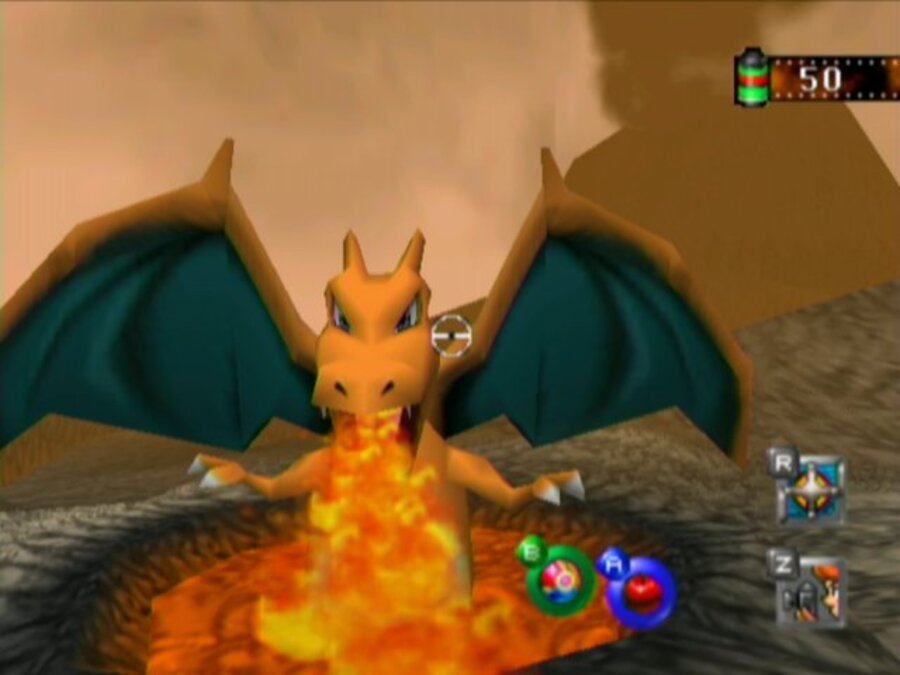
Nintendo 64
The most notable of which is the Pokémon Stadium series. This series allowed for you to connect your Game Boy games up to the Nintendo 64 and play the games in full 3D and even play in multiplayer against your friends. The Stadium games are notable in that the late Satoru Iwata was given the battle system without any reference material and managed to convert it from the Game Boy to the Nintendo 64 in less than a week.
The first Pokémon Stadium was released in 1998 in Japan only. This game only allowed for a small fraction of the Pokémon to be played and featured a limited amount of modes, with trainers being made up from the 1996, 1997 and 1998 Pokémon championships in Japan.
The second Pokémon Stadium is the one which was released internationally and allowed for all 151 Pokémon to be played. It beefed things up with elements such as the Gym Leader Castle, being able to play your Game Boy games on the TV and most notably having 9 of the most iconic mini-games kids could play such as the amazing Sushi Go-Round.
Pokémon Snap is another of the Nintendo 64 games released. This game had you play as Todd Snap, who was introduced in the anime, as he went through Pokémon Island capturing Pokémon, this time on film with his camera. Your photos would be rated by Professor Oak and you could even print them out at special Kodak stations in the US or when the Wii re-release came out, send them to friends. We still await a sequel.
Hey You Pikachu is a game that never made it to the UK. In it, you used a special microphone peripheral for the Nintendo 64 to talk to Pikachu and help it do certain tasks and just generally play as a virtual pet.
Pokémon Puzzle League is the only Pokémon game to have never been released in Japan. This game was a take on the Panel de Pon style puzzle game and was fully based on the anime. You chose one of three Pokémon to face up against the Gym Leader and Elite Four's Pokémon to play through and win the puzzle challenges. It also featured a multiplayer mode and a special 3D puzzle mode.
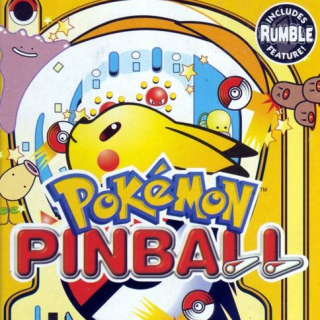
Game Boy
Pokémon Pinball is one of the Game Boy Color spin-offs. This game was simply a pinball title where you had to catch all 151 Pokémon. It uniquely had a special rumble feature built into the cartridge. There were even special bonus mini-games to find and defeat to get the best high score.
Finally, there was Pokémon Trading Card Game. This game was an RPG that utilised the popular Trading Card Game and made a story about you starting as a new card player who wants to go through and beat the Club Masters, and then the Grand Masters. This game fully took all the mechanics of the trading card game and put it into a fun package.
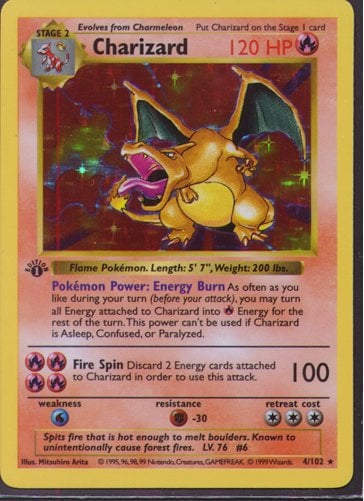
The TCG
So what is the Trading Card Game? In October 1996, Creatures Inc., one of the companies that helped in development of the games, started a Pokémon card series. This series was modelled on the games and featured Pokémon battles with similar type mechanics. It spawned many sets to this day, with thousands of different cards being created over the years and billions of cards having been sold worldwide. There were numerous sets in the first generation to get at least 1 card for each Pokémon out. It also included a Team Rocket set which introduced Dark Pokémon and two gym sets which showcased the Pokémon of the in-game Gym Leaders of the Kanto region.
Conclusion
As we approach November 1999 in our retrospective, the first generation of Pokémon comes to an end, but this generation is arguably the most iconic. It's the one that began it all, with some of the more iconic creatures such as Pikachu, Charizard and even Tangela. When many people think of Pokémon, they think back to this era. While the games may not be the most technologically advanced, and some of the Pokémon with some of the more generic designs, this generation will always be the one which many will look back on with fondness.
Sources:
http://www.gamasutra.com/view/feature/3979/the_art_of_balance_pokmons_.php





Comments 51
That Charizard card? I have it.
Bow down.
@Pandaman I actually won the entire base and jungle sets from a contest on WB. Then I was an idiot and used them in a deck and bent the cards all up. So much for collectables.
What started out as the best RPG on the GameBoy really didn't expand much on the original format. Original Yellow is still my favorite by far.
@Samuel-Flutter I think I vaguely remember this contest...? You won it? What did you receive them in??
Pokémon holds a particularly special place in my heart; I was the right age to be caught up in it, all my friends were crazy about it, the cards became banned in my school making them even more sought after, it was a perfect storm of Pockety Monstery goodness.
In my opinion, Pokemon is one of the few series that hasn't had a low point.
@Pandaman I'm honestly not sure what they came in, I think it was a Pokemon binder, but I could be mistaken. It was really weird, because my older brother entered too and won a first place prize. I just assumed no one else entered.
Still have my Pikachu backpack which, while completely useless and tiny, is adorable and sums up my very early childhood.
I have Pokemon cards in the loft and Pokemon yellow to this day is my favourite hand held game! Just amazing it was I even bought the strategy guide just to make sure I had completed everything 😄
A good read this brings back so many memories.
I'm a massive, massive Pokemon fan, and I owe a lot to Gen 1 as a series for being the start of the franchise. Without it, we wouldn't have the amazing games we have today in the series which have given me so much enjoyment over the years. So thank you Gen 1 for being the awkward baby steps the franchise needed to happen!
That said, I started Pokemon in Generation 3 with Ruby and Sapphire (I then retroactively played the old games), so all the nostalgia for Gen 1 simply doesn't exist for me. And that's why I just don't really like Gen 1 that much. The aforementioned glitches and limited spritework are a hindrance to the game, but the abysmal type balance (Psychic dominating as much as it did) and other minor gameplay issues are what really hold Gen 1 back from being the best. That said, whilst my most hated Pokemon come from Gen 1, a lot of the designs equally fall into some of my more liked designs, so Gen 1 is far from all bad! The region is extremely well designed in a way that a couple of future regions aren't, and the plot is decent.
I liked my baby steps analogy from earlier because it actually describes Pokemon pretty well. Babies are popular things, and are fresh and new and exciting in the lives of those who encounter them. Older kids and adults, whilst still loved by a few, are rarely as unanimously loved. And I feel like that describes Pokemon pretty well. Gen 1 hype is the baby, everything that followed is what came after.
I'm gonna look forward to this series.
(Oh and by the way, Pokemon Snap is awesome, they need to make a Sequel. Using the Wii U Gamepad as the camera! Won't happen with NX but hey).
Pokémon has always been a good time for me, minus XY which just...ugh, and some aspects of Johto and Sinnoh that drive me mad. Shame I'm in the UK with it's anti-fun gaming and I grew up around bullies.
I worked at Toys R Us at the time, and ended up a Gym Leader. Sitting down and playing Pokémon with kids sure beat work on a Sunday morning. The most important part was keeping the older kids from trading a squirtle for some much smaller kids Charizard. Weirdest part was I was recognized by 6-12 year old almost everywhere I went. And I think I ended up with about 20 Mews on my copy of Blue.
Pokemon is love. Pokemon is life.
The best part about Gen 1 was that all Pokemon were featured in marketing. Nowadays it's just Pikachu and the current generation's starters, over and over again.
The first series of the Pokemon anime was weird in a wonderful way. Every few years I spend time blowing through the Indigo League and Orange Island arcs. The later series lost a lot of the odd charm.
It's unfortunate that Pokémon is no longer the global juggernaut that it used to be. Sure, the games are still sales setting records in Australia, Europe, North America, Japan and South Korea (which are Nintendo's primary markets), but it has faded into obscurity nearly everywhere else. People still remember the classic anime episodes and games with absolute fondness, but with both Nintendo and The Pokémon Company to blame for neglecting the presence of Pokémon everywhere else in the world, it's a shame to see such a phenomenon no longer being the universally renowned brand that it should have continued to have been.
I'm Australian-born, but I've been spending the last few months in Turkey, and I've noticed that the people in my generation here (I'm in my mid-20s) still remember the "golden age" of Pokémon, comprised of both generations I and II. Game Boys weren't readily available here (nor could anybody afford them even if they were) so people would download the Game Boy games onto their phones and some even managed to trade and battle using their phone's in-built IR capabilities. People here also refer to NES games as "Atari" games, and they were readily available on bootleg systems known as "GameStar" (among other similar knock-offs) which included dozens of pre-installed games (mostly NES; though I cannot remember if games from other 8-bit systems were included), and some discount stores sold cartridges containing other games (many here are familiar with the likes of Donkey Kong, Balloon Fight, Duck Hunt, Wild Gunman etc. due to this device). I'm not condoning these practices, but many here have played NES and GB games in their childhood even if they weren't officially released in this part of the world (most have made the switch to free-to-play games on computers and smart devices).
It would actually make a lot of sense for Nintendo to create a device similar to China's iQue so that other markets can play Nintendo games, even if this means releasing such consoles after their lifespan in Nintendo's more lucrative markets. While a lot of markets cannot feasibly sustain devices such as the Nintendo 3DS and Wii U, I believe Nintendo could release a system based on say, the Nintendo DSi, which would be quite cheap to make nowadays, and they could then make cheaper region-locked cartridges that can only be played on these systems designated for poorer economy markets, and in time, if these systems end up selling enough units, then popular franchises can be localised for these markets too. Flashcards will remain a problem however, unless Nintendo sells their games exclusively via an eShop-like system. It's unlikely to happen, and perhaps Nintendo have already considered (and rejected) the possibility. Perhaps these markets aren't worth it, but it could help in expanding Nintendo's global reach.
No mention of MissingNO.?
i was 16 when this came out. They were also my first handheld games. I miss the simplicity of the old Pokemon games. i wish they would rerelease gen1. or at least Pokemon Yellow. I loved having Pikachu following me around. I remember Pokemon Snap although I wasn't any good at it. My little brother and I trading all the time.
Wow, news is so slow that you clutter the site with random rubbish so no one can get to the very little news there is. Thanks! /s
Pokemon has had an absolutely major effect on my childhood, I was obsessed with Pokemon for years. I didn't get to start playing the games until 2nd gen though because my parents were initially opposed to me playing video games (although I did end up playing RBY later on).
I really think the games have aged terribly now though, so if they're ever going to revisit Kanto again it should be through some sort of BW2-esque experience.
@ianolivia
If you dislike it, go read IGN.
I hope Nintendo do something special for Pokemon 20th Anniversary!
@Pokefanmum82 You should play Pokémon HeartGold and SoulSilver on DS. The Pokemon follow you around like in Pokemon Yellow and it looks great. It is arguably the best Pokemon game ever!
Will never forget all the time I spent playing Red and Yellow 6th grade year with my brother, and also getting the cards banned at school will also be a everlasting memory lol
Bought the Charizard card off some kid in school for £10...I don't think it's increased in value as of yet!
Interestingly, I am in Generation 1 due to me playing through some of video game history.
The one glaring flaw in this article is the omission of the video game based on the TCG. Then again, I felt a rush when he wrote about the TCG, hence...
@nessisonett Just noticed your avatar. Love it Anyways, I got the whole Pokemon thing backwards, I watched the show but never knew about the video games. I'd like to get into the series now, but I wouldn't have a clue where to start.
@Nintendo_Ninja /s means sarcasm.
My school banned Pokemon cards and from the looks of this comments section so did many other schools. I wonder why that was. It kept a lot of kids from fighting out of sheer boredom.
@ninty4thewin Doing one a month as we go into February to build anticipation
@MarkyVigoroth The TCG GB bit is just before the TCG paragraph
@KTT Why do you think the gameplay is getting more child-friendly? If anything, it gets more complex with each generation with additions such as hold items, breeding, the Steel and Dark types, abilities, natures, double battles, the attack-specific physical/special split, hidden abilities, triple and rotation battles, and now the Fairy type, Mega Evolutions, and sky and horde battles.
I read a preview in a magazine a while before release and, being a huge JRPG fan, obsessed up until release then bought it day 1. Loved the entire game series since. Practically forced my friend into getting Red (I got Blue) and traded away.
I still remember how gutted I was after my first playthrough, as I bought a guide help fill my Pokedex, only to find that the Moltres and Zapdos (if memory serves) I KO'd weren't coming back...
I was never interested in the anime and the success of Red & Blue, in the UK in particular, always really surprised me given that it's basically a traditional JRPG (but with some of the best gimmicks EVER) but with hindsight, I guess the marketing was genius.
@KTT this is perfectly exemplified by how my 9 year old son finished Omega Ruby in a couple of days.
There's zero challenge. I don't buy the games expecting anything beyond the light challenge of the original but it's ever decreasing difficulty has reached a seriously dumb point and is showing no signs of slowing. Surely even the most casual of gamers must get a little disillusioned.
I sincerely hope that they can at least bump it up a little next time round. I've long succumbed to the fact that it would risk sales if made too difficult, and I have far too many backlog games and far too little time to be getting involved in any meta-game level play, but surely there can still be layers to the main game.
@Kirby-life My school banned the cards due to constant theft given their relative monetary value at the time
Ah, Pokemon. I love you so. I'll never forget the day I played Red (or Blue?) for the firar time and didn't understand at all what to do.
Pokemon was pretty much the love of my life when I was a kid. I lived and breathed it's existence because I didn't have much else. That being said, I started with Pokemon Red and haven't stopped since. I'm now in full time employment and (though I recently lost my Pokemon X and Alpha Sapphire versions sometime this year) and still plan on sticking with the series when the next generation games come out. Until then... I gotta go buy myself a new pokemon X and begin again...
Wow, Hey You Pikachu never made it to the UK?
I feel sorry for you folk. Might have been the first video game to make me cry as a kid with that ending.
Japan not getting Pokemon Puzzle League though is a true shocker. I also loved it.
Ah the days of bygone youth~
20 years old... im aging rapidly
@PigmaskFan
They did. They briefly mentioned that gen 1 was a glitch fest.
My younger cousins were the right age for Pokemon and after a bit of persuading got me to try the game. The next day I bought Blue. I was hooked. For life 😍
@KTT mega evolutions, while a gimmick, are crucial for the current battle meta. With dozens of hold items introduced gen 2 onwards that really tipped the scales of battles, there needed to be a way to ensure that not every team was using a hold item strategy to shake things up.
Mega stones take up the all important item slot that berries or scarves would traditionally take, forcing an opponent to risk a first turn KO/status effect in favour of an incredibly powerful stat boost next turn onwards.
Fairies were also desperately needed with how many dragons polluted the tourney scene.
So many of my favorite pokemon are from gen 1. Jigglypuff, Vulpix, Dratini, Bulbasaur. . .the list goes on and on! After gen 1, I didn't come back to pokemon until gen 6 (mainly because I didn't buy another handheld after the gameboy color until the DS). That's probably why gen 1 holds so many great memories for me.
@Sanicranfast I agree they may be crucial and they indeed add something (a twist perhaps) to the way how you play competitively. Mega Evolution is both hit and miss depending on how you view it. I see it more gimmicky. I played it, tested, and mostly it was intersting and fun (like when someone megaevolved their Garchomp only to be destroyed by my - unevolved and therefore faster - Garchomp). Yet, in my opinion, the series could go without them. You can play without them, you can battle without them and you can even competetive battle without them. If they would implement the mega evolutions in the story line better - I would be more positive about them. I feel Mega Evolutions were added to keep the momentum of the franchise. Megas took place of pokemon in the Pokedex, and they are making huge hype about them, while I think they should focus on re-innovating the series. Not by adding more features (only to some of them would be removed in next gen) but by changing the already existing ones. Special and physical split is a good example of redesigning the series. Changing EXP points yelding in BW is another example, missed or not, but still an effort to change the gameplay in more valuable way than adding some extra Megas - which are usually useless during the gameplay and which only can shine during the competetive play. As for Faires - I think the series could go on without them rather well. I never felt the dragons were too powerful - it was simply too many good dragon pokemon, and many Dragon types are legendaries. Yet, I don't mind Fairy type in the gameplay, even if I feel they are a little bit TOO overpowered - type advantage wise. After all, they add some more usage of Poison type pokemon now.
@KTT To be fair, the series has never been that difficult. It's designed so that most players can get into the Hall of Fame without too much trouble. Even in the first generation, people might get stuck for a while on Sabrina, the gym battle with Giovanni, and/or the Pokémon League, but that's about it. If they wanted it to be difficult, they wouldn't let you save almost anywhere, let you keep all your Experience and just let you continue at the last Pokémon Center after fainting, nor would healing be a free service. Now the post-game content of each game, that's where the difficulty spike comes in...
Perhaps you have a point with the narrative content, but there's still some dark stuff in later games such as Ghost Pokémon known for stealing souls and Team Flare actually attempting genocide on the entire Kalos region.
@Cyber-BLP-- I love Pokémon 1st and 2nd gen, specially. The first and second ones offered outstanding gameplay and simplicity when gameplay ruled over graphics. XY was a problem, though... Fighting became a thousand times better in 3D, finally, but the game just ends when you finish the story. There should be more post-credits content.
@Nintendo_Ninja "7.8/10 too much water"
@BulbasaurusRex I know it was never been difficult, but right now its easier than ever, ridiculously easy. Right now I'm replaying Yellow and Gold (as I never got the chance to play the originals) and I feel there are more obstacles and hidden tips than in XY where like everything stopping you is a plot device and every tutorial is literally forced to you. In Gold (story playthrough) feel like I have to actively search and solve my way through the game (the Sudowoodo quest for example) while in XY I just followed the pointing signs. It was up to you and your curiousity if you cought your legendaries and visited all places during you play (in Yellow I skipped Seafoam Islands, I can pass Whirl Islands). You could actively search for new locations or skip them entirely. Even in 3 gen were some pretty crazy cryptic stuff like Feebas. And how you had to use Morse's code to find legendary golems? That was a definitely right thing. In XY you are pretty much forced to see everything and catch the greatly exposed legendary. And when you feel you can go somewhere else to reasearch it - the game won't allow you to do such (the dessert buildings in Kalos, probably a cancelled quest that hopefully will be used in XY2/Z/Hoenn Z/Zeta Emerald). Sure, later you can search for Megastones and other legendaries - but I feel they are outside the story line (except being a foreshadowing of Hoopa in future games/events), belonged to the post game, and were added and exused there so people who don't have previous games can get all those precious legends at once. And don't get me started about Unknown Dungeon in XY, which was a huge dissapointment. The only value those legends have are those 3 guarantered max IVs and possibility to soft reset for shiny.
The whole post game in pokemon games was never my thing as most of the part I found it boring, short and disconnected to the story line. Never liked Battle Frontier, though I spent some time there, competetive plays were accesible to me in 6th gen (better internet connections, easier breeding), and I find Battle Mansion in 6th gen boring and frustratic after countless fights. Not only it takes a large amount of time to just get near the 100th fight, but AI allways use some cheap haxed tactics with their low accuracy moves allaways hitting and pretty much allways having the side effect (like I was frozen solid 3 times in a row, virtualy making me loose, or when Ice Fang freezed me, then after switching flinched me and then again freezed me). There were nice touches in XY and ORAS (Looker quest and Delta Episode) althrough they were more like: go from location A to B, read the text, repeat.
Pokedex entries may be still creepy as ever and I'm thankful or that as reading it is still interesting, but its an encyclopedia, not a game's story. And its rarely referenced otheresle in the game. All the teams reasoning and actions are just the same thing over again - since RSE every team steals pokemon and wants to do some kind of genocide (exluting Team Plazma - which is most reasonable and original from all recent teams - another good point of gen V), one way or another, with a team from the most repetitive, copy pasted formula, game - Team Galactic - wanting to literally kill all the Universe. Which is quite bizzare to be honest, and very fantasy like, in oposition to simply money chasing mafia like Team Rocket. Team Flare is yet another team wanting to do literaly the same thing as the other villainous teams, but this time they have ever more ridiculous reasons. Which I don't get till this day, even with Bulbapedia's help.
Anyways, my point is, the games were allways easy, but now there are waaaaay too much easy, with all that hand holding. And with all the cutesy rainbows, pastel colors and friendship overload, it lost some of its mysterious, dark, vibes it had in the past.
@KTT I think you're confusing "difficulty" with "linearity." The gameplay itself doesn't get any easier, just the means of exploration. I personally think every place should have a reason to visit (aside from postgame locations), and I like linearity over something like the original "Legend of Zelda" or "Metroid" where they use "exploration" as a means of frustrating confusion in trying to figure out what to do (although the Sudowoodo thing was pretty spelled out for you, anyway). I shouldn't have to resort to a published or online walkthrough just to make sure I don't miss too many important things (although walkthroughs can still be useful for other things). For example, the Power Plant in the original games is so far out of the way and unimportant that you could play the games a half dozen times and never know it's there and be wondering why you can never find very many Electric types. Likewise, you could try to take on Sabrina's gym before continuing on to the Bike Bridge and Fuschia City and be wondering why her Pokémon are so much stronger than yours. The higher degree of linearity in the later generations is a good thing in my opinion.
Likewise, you're confusing "maturity" with "repetitiveness." Most people consider sinister plots of world domination or genocide to be darker than a mere organized crime syndicate. Just because they repeat it a bunch of times doesn't make it any less evil. Also, don't forget that the sociology issue in B/W was merely a front by Ghetsis for a more standard world domination plot, and Teams Galactic and Flare are different as their primary goal is actually mass murder rather than money and power.
Anyway, you have some valid criticisms for those of whom share your views. You're just confusing the issues that you actually have.
You may be partially right about me confusing linearity with difficulty. But only partially as I think when something is linear then it's simpler and therefore easier: if it's linear then make it harder or add more stuff, like in BW, if it's open world, make it easier etc (TLoZ: ALBW). Crash Bandicoot has lineart level design which had to use difficult platforming, otherwise it would be hella too easy. In other hand, Spyro games are more open world. They are easier, but you have to explore your way through. Both games are equally difficult (Crash even more if you want achieve 100% complete playthrough).
Right now pokemon games are TOO linear, and therefore, TOO easy, because they don't counter it in any way. They even drop Lucky Eggs and healing guys in caves onto you. It's a little bit more sophisticated Looker quest - go from point A to B, winning battles in the process, defeat Gym Leader/Team, repeat. You may like and enjoy that linearity, that's okay and it's allways nice to see how other people experience Pokemon games. But I would like to explore more. Maybe not that hardcore exploring with maze like world of Telefang or side scrolling Metroid, but something more 3D Zelda-esque games. I want to go an adventure and see new things and places and your Power Plant example is a perfect example of doing it right and in my view it couldn't be better. They could add more dungeons or routes in post game - another good point of V gen (even if all routes have the same music fith gen content is still better than 6th gen postgame). I think a good game will increase your curiosity and will make you want to explore and uncover each inch of the world you are in, increase the curiousity enough to finish the game without walkthroughs. Unless you want to catch Feebas, that is ;]
Repetiteves is another bad issue the pokemon games have and repeating the same weak plot over and over (with more and more unreal reasoning behind it) won't lure mature gamers, and will even discourage old fans, but that's other thing to talk about. For maturity in pokemon I consider a good plot without fairy tale stuff and plotholes. With reasonable motives. All the pokepuffs, friendship and love is fine as long they will give me a proper plot that will be more than - "your love to pokemon saved the world from villainous team". I metioned before the first generation team had good reasons to be active - money is a powerful thing. And Team Rocked was virtually killing pokemon for money, one by one. Not via never to happen genocide we can't relate to. Destroying other beings for money. That's the real stuff and I can connect to that as this happens in our reality. It's sad but true and provides greater impact than imaginated fantasy genocide by some rainbow crystal ray (well the games are rated E, so they can't go further either). Hoenn has some immature dudes without true education (though there is a lesson - never be entitled in just your opinions and listen to others, it could even go farther and be a metaphor for religious and/or pollitical conflitcts), Sinnoh has a crazy guy (kinda sad seeing him trying to create the new universe) and Unova has another crazy guy but his team and actions are much more uncovered in the game than in any other games so far, which made him more real to me. In Unova I see Team Plazma's actions being more influencing people and environment. And I can't be connected to Magma, Auqa and Galactic as existence of such teams is ridicullous. Flooding the land, really? Moreover, how about some more story besides the standard villainous team stealing pokemon and suck at using Zubats + friendship is supper effective? More connections between characters? Protagonist's background? How about your father? How about teaming up with local police to take down criminals? Choosing someone for a double battle mission and then your actions will be reflected in the future? And adding something more than a plain text (even a slideshow), it's XXI century already, not 80's. All the people in the pokemon games feel more like decoys, dummies, puppies rather a real human beings, and this also influences my experience. At least in HGSS you slowly discover your rival (stereotypical thing but better than nothing), in BW you solve mysteries behind N and Plazma. Moreover Bianca has issues with her dad, and Cheren is all angsty. BW2 has Colress, who is nevertheless an interesting character. And the only plot like part I liked in ORAS was Delta Episode, because I was curious in Zinnia. I got more alternative universes and timelines than Zinnia though.
Yes this brings back memories of getting ready for school watching Pokemon on Cheeze TV! So many great episode's, like when Charmander had to be rescued in the rain :') Pokemon Blue still my favourite, you can't beat Gen 1 (although Gen II was pretty great too)
Show Comments
Leave A Comment
Hold on there, you need to login to post a comment...